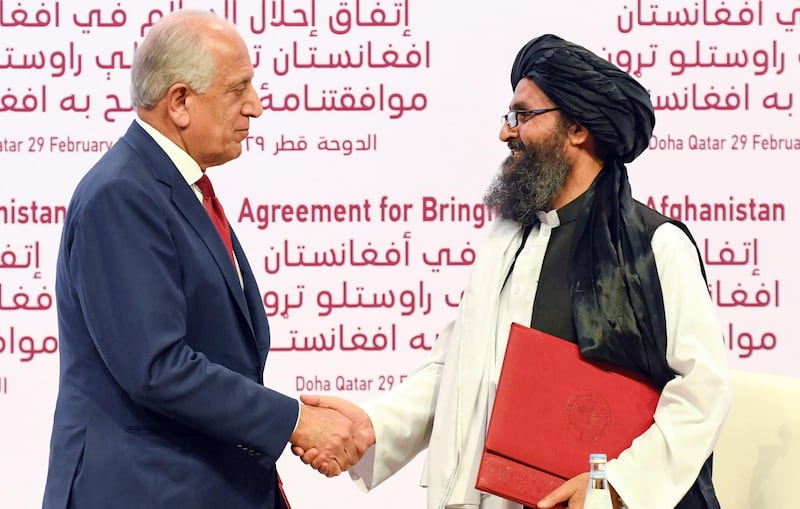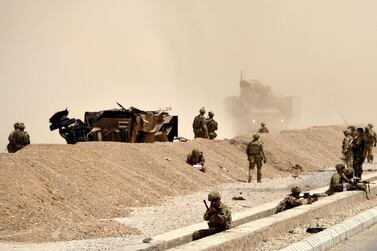"The other side is tired of war. Everybody is tired of war.” Those words by US President Donald Trump, as he announced the signing of a deal with the Taliban to end troop presence in Afghanistan, reflect a yearning for peace from all those involved in America’s longest war. There are great expectations that this agreement will pave the way for long-lasting peace and stability in a country that has been ravaged by conflict for generations. Winning the peace will not be easy, but is vital.
Afghanistan has been at war, almost continuously, for the past four decades. The agreement signed this week states that the US will withdraw from the country within 14 months, provided the extremist group cuts ties with other terror networks and refrains from hosting groups that endanger American lives and undermine their interests in the country.
The US launched operations in Afghanistan in the aftermath of the September 11 attacks, as the Taliban, which ruled the country at the time, had provided refuge to members of Al Qaeda.
If these conditions are met, the US will lift sanctions imposed on the Taliban and urge the UN to lift its own penalties on the group.
While these developments give way for cautious optimism, the agreement has been criticised for failing to involve all the actors at stake in the conflict. The Afghan government, which rules half the nation and is the legitimate authority in the country, had not been invited to the talks, as the Taliban do not recognise its legitimacy. But sidelining Kabul sets a dangerous precedent as it undermines the position of an American ally in future talks. It also gives weight to the propaganda of the Taliban, which claims that the Afghan government is a puppet regime that takes orders from Washington.
While Kabul and the Taliban have agreed to launch intra-Afghan talks in the future, US withdrawal is not conditioned on the success of such negotiations, nor does it require the fighting to stop. And with the US planning to withdraw completely in a little more than a year, it is now up to the Afghan leadership on both sides to end the conflict. For the Taliban, this means committing to a long-term ceasefire and sitting down with representatives from Kabul to find a mutually acceptable solution.
Meanwhile, the Afghan government is bogged down by corruption, mismanagement and bitter rivalries. President Ashraf Ghani was re-elected in September with the lowest voter turnout in nearly two decades. The result of the polls, announced this month, has been contested by Mr Ghani’s rival, Abdullah Abdullah. However, it is important that Kabul present a united front if it is to counter the Taliban’s influence without American support on the ground.
It also has a duty to amplify the voices of minorities, many of whom fear that a Taliban-led government will severely curtail their hard-earned rights. The entirety of Afghanistan was ruled by the Taliban from 1996 until the US intervention in 2001. During that time, the group imposed their extremist view on Afghan society, leaving women with close to no rights and persecuting religious minorities. Afghanistan must not be allowed to go back to those dark days.
The Taliban has pledged that this will not be the case. Now, the time has come to prove it.
After decades of war, it is time for Afghan leaders, politicians and activists on all sides of the conflict to find a political solution and bring their people the peace and stability they have sought for so long.






